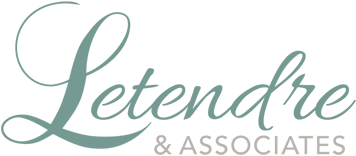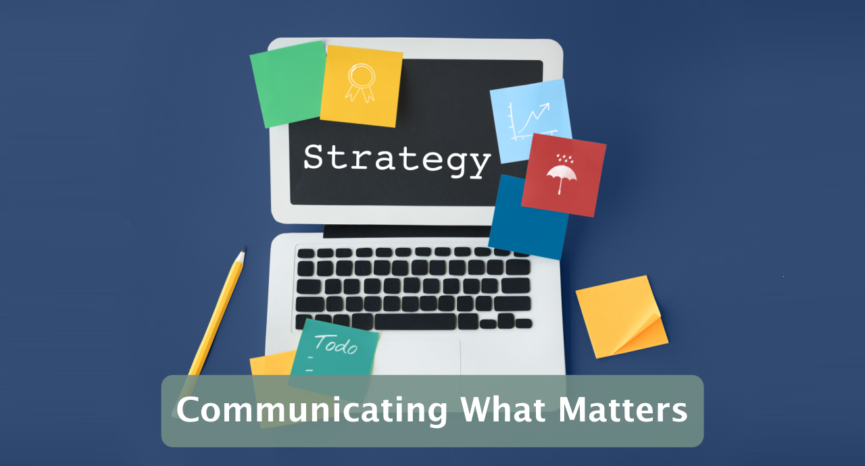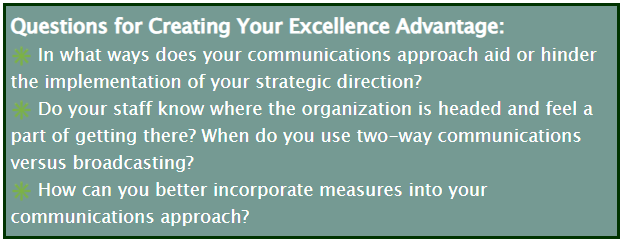Communicating What Matters
In wrapping up this series about setting and executing on your strategic direction, we’ll focus on the importance of communication — specifically organization-wide communications.
One cannot overdo it when it comes to communications. As we know, people need to hear things multiple ways and multiple times.
There are many forms and reasons for highly effective organization-wide communication. Here are a few that relate to your strategic direction.
Communicating About Change
Very often our strategic initiatives are about organizational change. And when it comes to change, people prefer to know what is coming before it impacts them. Proactive communication is key. We can utilize well-timed communications to create staff awareness, the desire to contribute, and to reinforce the strategic change.
Ideally, these communications related to changes have a two-way communications component — a way to ask questions and engage to achieve greater understanding and acceptance.
Routine and frequent communications can aid, and in some cases even enable, the implementation of strategic initiatives. By communicating transparently about upcoming changes, improvements, new services, new processes, and the like, we create an environment more supportive of the upcoming change. We create a climate where questions can be asked, answers provided, and concerns addressed, thereby increasing support for the change.
Communication is one of many tools that can assist you in the change management process for creating lasting and sustained strategic change.
Communications Approach
When I work with clients on their communication’s approach, there are a number of things I highlight. Here are two of them:
1. Measures as a Communications Method

I encourage organizational leaders and managers to recognize that their measurement system is their hardwired communications system. When measures are aligned directly to the strategic direction of the organization and shared regularly with the organization they are “continually broadcasting” what is important. When our words fall short, the measurement system keeps communicating.
2. Use of a Framework for Communications
I also recommend aligning the overall communications approach to their strategic direction. Consider it as the overarching framework for ongoing communications.
For example, if you have 4-6 major Goals defined in your strategic direction, then utilize that as the primary framework for communications. For many in healthcare and human services, they often used a balanced set of goals around Quality, Access, Service, People, Financial Health, Community.
Using this as the framework for communication, communicate progress, updates, anecdotal stories, and improvement efforts for each Goal on a rotating basis. Linking of course to key metrics as well. One week (or month) highlighting the People Goal about becoming an employer of choice for your region. The next, focusing on the Quality Goal, sharing a cross-functional team’s success in improving a key outcome of service delivery as perceived directly by customers.
Strategic goals can become the overarching framework for organizational communications.
In these ways, and others, you reinforce the strategic direction of the organization.
As the strategic framework becomes central to your communications efforts, it is internalized and more deeply understood throughout the organization. When communicating decisions and priorities, you can always be connecting back to the Why — the connection to your strategic direction. And when staff better understand the strategic direction, they feel part of something bigger.
Organization-wide communication is yet one more means to enable your strategic efforts.
In Summary
In summary (from across this article series on strategic direction setting and execution):
- Thoughtfully consider the best approach for setting your strategic direction
- Think of action planning as part of implementation
- Create alignment, first and foremost among your senior leadership team
- Ensure careful prioritization of strategic efforts
- Utilize scenario-based planning where prudent
- Develop contingency plans where vital
- Ensure that measures are used for managing and therefore are tied to your strategic direction
- Communicate regularly and systematically
- And be intentional in ensuring progress, against measures and your plans
If you’d like to receive these Inspirations in your inbox every other week, you can subscribe to Kathy’s Excellence Advantage Inspirations Newsletter.
Kathy Letendre, President and Founder of Letendre & Associates, advises organizations and leaders to create their excellence advantage.
Contact Kathy by phone or text at 802-779-4315 or via email.


